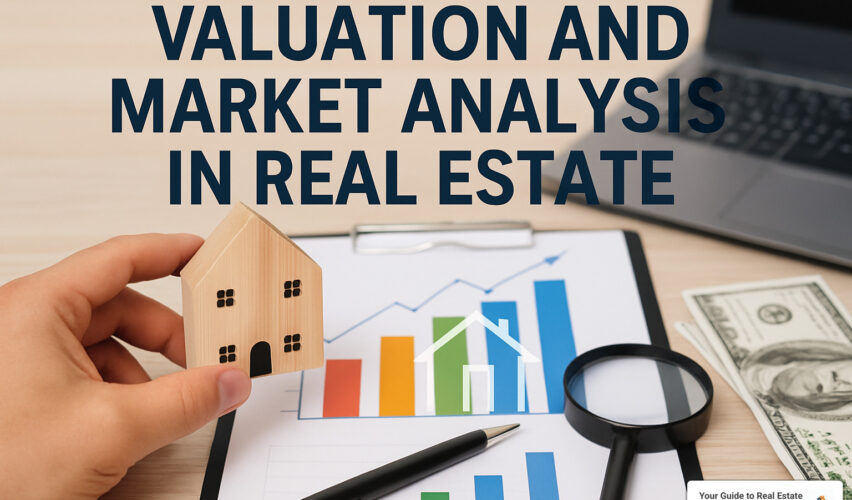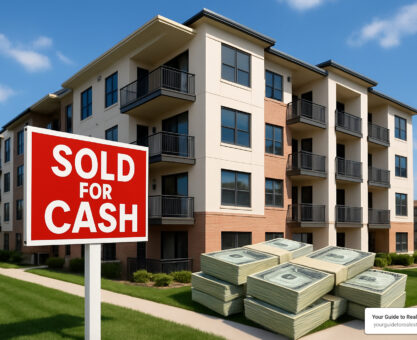Understanding the Science of Property Pricing
Valuation and market analysis in real estate are essential processes that determine how much a property is worth in the current market. If you’re trying to understand property valuation methods, here’s what you need to know:
Quick Answer: Real Estate Valuation & Market Analysis Methods
- Comparative Market Analysis (CMA): Estimates value by comparing similar properties that recently sold
- Sales Comparison Approach: Formal valuation method adjusting comparable sales for differences
- Cost Approach: Values property by estimating land cost + building replacement cost – depreciation
- Income Approach: Values income-producing properties based on the income they generate
- Automated Valuation Models (AVMs): Computer algorithms that estimate values using historical data
Property valuation may be considered the heart of all real estate activity. Whether you’re buying your first home, selling a property, or making an investment decision, understanding how properties are valued can save you thousands of dollars and prevent costly mistakes.
As a first-time homebuyer, you might wonder why the asking price for a home is $450,000 rather than $425,000 or $475,000. Is that price justified by the market? Is it a good deal? Without proper valuation skills, you’re essentially guessing.
What makes valuation so important? Properties priced using data-driven market analysis sell 50% faster on average than those priced without one. Meanwhile, properties listed at or near their appraised value are 2.5 times more likely to sell within the first 30 days on market.
Valuation is both a formula and an art form. While professional appraisers follow standardized methods, they also apply judgment based on market knowledge and experience. This is why two appraisers might arrive at slightly different values for the same property.
Market analysis examines current conditions, trends, and comparable properties to establish context for valuation. It answers questions like: Is it a buyer’s market or seller’s market? Are prices rising or falling? How quickly are homes selling in this neighborhood?
Together, these processes create a scientific approach to pricing that goes far beyond gut feelings or wishful thinking.

Real Estate Market Analysis (CMA): Foundation of Pricing
Ever wonder how real estate professionals determine the “right” price for a property? At the heart of this process lies the Comparative Market Analysis (CMA) – the bread and butter of property pricing. In fact, more than 90% of real estate agents rely on CMAs as their primary pricing tool, and for good reason.
A market analysis in real estate (or CMA) is like detective work – it investigates what a property is worth by examining similar homes that have recently sold in the area. Think of it as the real estate version of comparison shopping. It helps answer the crucial question: “What are buyers actually willing to pay for homes like this one right now?”
Unlike formal appraisals, CMAs are typically conducted by real estate agents or brokers. They provide a reasonably accurate value estimate without the extra cost and formality of a certified appraisal.
What a CMA Is & Why It Matters
At its core, a CMA gives you a snapshot of the current market focused specifically on properties similar to yours. It’s like taking the pulse of your local real estate market at a specific moment in time.
The most valuable data comes from “arm’s length transactions” – sales between unrelated parties who are each acting in their own best interest. These transactions reflect true market value because they happen without family discounts, desperate circumstances, or other factors that might skew prices.
As one seasoned appraiser puts it: “A seller’s unrealistic asking price is a roadblock that can be remedied by a knowledgeable salesperson with a well-prepared CMA.”
Why does this matter so much? Because pricing strategy can dramatically impact your bottom line. Properties priced within 5% of their actual market value (as determined by a thorough CMA) typically sell in half the time of overpriced homes. Getting the price right from the start can save months of market time and thousands of dollars.
Selecting & Adjusting Comparables
The magic of a CMA lies in selecting the right “comps” (comparable properties) and making appropriate adjustments. Here’s how it works in practice:
Location proximity is crucial – ideally, comps should be within the same neighborhood or within a mile of your property in similar areas. A home in an established neighborhood with mature trees will have different value drivers than a similar home in a brand-new development.
Time frame matters tremendously, especially in today’s dynamic market. Recent sales (within 3-6 months) best reflect current conditions. As one industry guide notes, “In rapidly changing markets, even a month can make a significant difference in values.”
Feature adjustments are where the real skill comes in. Since no two properties are identical, adjustments must be made for differences in square footage, lot size, bedroom count, property age, special features like pools, and more.
Real estate professionals follow the “mirror rule” when making adjustments: subtract value from comparables with superior features, add value to those with inferior features compared to your property. For instance, if a comparable home has a swimming pool worth about $15,000 but your home doesn’t, you’d subtract $15,000 from that comp’s sale price to make it equivalent to yours.
CMA vs. Broker Price Opinion vs. Formal Appraisal
Understanding the differences between these three valuation methods can save you time and money:
A CMA is performed by a real estate agent, typically offered free as a marketing tool. It provides moderate analysis depth and is perfect for listing a property or making an offer.
A Broker Price Opinion (BPO) comes from a real estate broker, costs between $50-$250, offers moderate analysis, and is often used by lenders for quick checks or in short sale situations.
A Formal Appraisal requires a licensed appraiser, costs $300-$800+, provides comprehensive analysis, and is necessary for mortgage lending and legal proceedings.
Interestingly, the average difference between a BPO and a certified appraisal is less than 5% in most U.S. markets, making BPOs a cost-effective alternative when a full appraisal isn’t required.
Lender requirements often dictate when you need a formal appraisal. For federally related transactions, certified appraisals are required for residential transactions ≥ $250,000, complex residential transactions ≥ $400,000, and non-residential transactions ≥ $500,000.
As one appraiser wisely notes, “Great harm can come to the client and to the professional if significant appraisal mistakes are made.” This explains why lenders and courts typically require certified appraisals for significant transactions.
Want to dive deeper into how CMAs work? Check out this comprehensive Comparative Market Analysis (CMA) guide or get the latest insights on pricing trends in our U.S. Housing Market Update 2025: Prices, Inventory, and Buyer Behavior.
Property Valuation Methods: Sales Comparison, Cost, Income
So you’ve learned about CMAs, which are great for getting a ballpark figure for typical homes. But when it comes to formal property valuation, appraisers have three distinct approaches in their toolbox. Think of these as different lenses to view the same property, each revealing something unique about its value. These approaches aren’t just made up—they follow the Uniform Standards of Professional Appraisal Practice (USPAP), which keeps everyone playing by the same rules.

Sales Comparison Approach in Practice
The sales comparison approach is the rock star of residential appraisals, used in over 80% of home valuations across America. It’s built on a simple idea that makes perfect sense: buyers won’t pay more for a house than they would for a similar one down the street.
Here’s how it works in the real world:
First, the appraiser finds 3-6 recently sold homes that are similar to yours. Then they verify these were legitimate “arm’s-length” sales (not transactions between family members or under duress). Next comes the detective work—identifying meaningful differences between your property and the comparables.
This is where the magic happens. Say your neighbor’s nearly identical house sold for $450,000, but yours has a beautiful updated kitchen that theirs doesn’t. The appraiser might adjust their sale price up by $25,000 to account for your kitchen, suggesting your home could be worth $475,000.
Appraisers love using paired sales analysis when they can find it. Imagine two houses that are virtual twins except one has a pool and the other doesn’t. If one sold for $350,000 and the other for $375,000, that $25,000 difference helps establish what pools are worth in your market.
Real-world example time: Let’s say there are three recent sales in your neighborhood:
– A house that sold for $450,000 (similar size to yours but with an older roof and dated kitchen)
– One that went for $480,000 (200 square feet larger than yours but similar condition)
– A third that sold for $435,000 (100 square feet smaller but with a gorgeous new bathroom)
After making adjustments for size (at about $100 per square foot), condition, and features, all three point to your home being worth between $455,000-$465,000.
Cost Approach—Replacement vs. Reproduction
The cost approach follows a wonderfully straightforward formula that even makes sense to non-math people:
Property Value = Land Value + (Cost to Build the Building – Depreciation)
This approach really shines for certain situations: when you’re valuing new construction, unique properties (like churches or libraries), figuring out insurance coverage, or determining property taxes.
There are two flavors of the cost approach:
1. Reproduction Cost: “What would it cost to build an exact clone of this property?”
2. Replacement Cost: “What would it cost to build something with the same usefulness using today’s materials and standards?”

Calculating depreciation typically uses the age-life method. It’s like straight-line depreciation in accounting. If a building has a 40-year expected life and it’s already 10 years old, it’s experienced 25% depreciation.
Let me walk you through a real example. For a 10-year-old warehouse that’s 5,000 square feet:
– The land itself might be worth $100,000 (based on what similar vacant lots sell for)
– Building a new warehouse costs about $50 per square foot, so 5,000 × $50 = $250,000
– After 10 years, it’s depreciated by 25%, or $62,500
– Add it all up: $100,000 + ($250,000 – $62,500) = $287,500
As one straight-talking appraiser once told me, “The cost approach is like a good backup singer—not usually the star of the show for older properties, but essential for certain performances.” It doesn’t capture how property values can skyrocket (or plummet) after construction.
Income Approach & Cap Rates for Investors
For properties that generate income—apartment buildings, office spaces, shopping centers—the income approach reigns supreme, used in over 70% of commercial appraisals. The premise is beautifully simple: a property’s value is directly tied to the money it makes.
The formula looks like this:
Market Value = Net Operating Income (NOI) ÷ Capitalization Rate (Cap Rate)
Let’s break that down:
– NOI is what’s left after you subtract operating expenses from gross income
– Cap Rate represents the expected return based on the property’s risk level
For example, if your apartment building generates $400,000 in annual NOI and similar properties in your area sell at an 8% cap rate, your building’s value would be:
$400,000 ÷ 0.08 = $5,000,000
Understanding cap rates is crucial if you’re an investor. Lower cap rates (like 3-4% in prime Manhattan locations) mean lower risk but higher purchase prices. Higher cap rates (10%+ in riskier areas) mean potential for better cash flow but with added risk.
Some investors prefer the simpler Gross Rent Multiplier (GRM) approach:
Value = Annual Gross Rental Income × GRM
If properties in your area typically sell for 10 times their annual gross income, a property bringing in $100,000 yearly would be worth about $1,000,000.
Sophisticated investors often go a step further with Discounted Cash Flow (DCF) analysis, which accounts for projected future income, expected appreciation, the time value of money, and eventual sale price.
As one investment advisor put it, “DCF is like looking through a telescope instead of a magnifying glass—it shows you the whole journey, not just where you’re standing today.”
You can learn more about cap rates and how they work in real estate investing from this Investopedia article on cap rates.
Market Value vs. Market Price vs. Fair Market Value
These terms sound similar but have important differences:
Market Value is the professional opinion of what a property would likely sell for under normal conditions between willing, knowledgeable parties. It’s what appears on your appraisal report.
Market Price is what someone actually pays. This might be higher or lower than market value due to unusual financing, seller concessions, or someone being in a hurry to buy or sell.
Fair Market Value (FMV) is a term you’ll hear in legal and tax contexts. It’s the price at which property would change hands between willing parties who both know what they’re doing and neither is being forced to act.
Let’s make this real: A home with a market value of $350,000 might sell for $375,000 (market price) if multiple buyers get into a bidding war. Or it might go for just $325,000 if the owner needs to relocate quickly for a job.
These distinctions really matter in situations like settling estates, appealing property taxes, or dividing assets in a divorce—contexts where fair market value is the legal standard.
For a deeper dive into valuation and market analysis in real estate, you can check out the California Department of Real Estate’s comprehensive guide on Appraisal and Valuation.
Pricing Drivers & Key Metrics in Action
What makes a property worth what it’s worth? It’s not just the building itself—it’s a fascinating blend of economic forces, neighborhood dynamics, and property features all working together. Let’s explore what really drives property values in today’s market.
The real estate market operates like a living ecosystem, responding to everything from interest rates to local school ratings. As a buyer or seller, understanding these forces gives you a tremendous advantage in negotiations and timing decisions.
Economic cycles create the backdrop for all real estate activity. When the economy expands, housing demand typically follows, pushing prices upward. During contractions, we often see the reverse. Demographic shifts—like millennials entering their prime home-buying years—create waves of demand that ripple through specific market segments.
Interest rates deserve special attention here. Even a 1% increase in mortgage rates can reduce buying power by approximately 10%, directly affecting what buyers can offer for properties. This is why savvy investors and homeowners watch the Federal Reserve’s moves so carefully.
Location, Neighborhood, and External Factors
You’ve heard it a thousand times: “location, location, location.” This mantra persists because it’s absolutely true in valuation and market analysis in real estate.
School quality remains one of the most powerful value drivers in residential real estate. Homes in top-rated school districts regularly command 20% higher prices than identical homes in average districts. I’ve seen families pay significantly more for a smaller home just to get their children into a particular school zone.
Transportation access creates value too. Properties within walking distance of public transit can fetch premiums of 4-24%, with the highest premiums in dense urban areas where parking is scarce and commuting is difficult.
Environmental factors play their part in the valuation equation. Waterfront properties typically enjoy 25-50% premiums (those ocean views don’t come cheap!), while properties near environmental hazards like flood zones or industrial areas often see 5-15% discounts.
Zoning and local regulations can dramatically impact property values by determining what can be built or how a property can be used. A lot zoned for commercial use in a growing area might be worth several times more than an identical residential-only lot.
The time of year matters too. In most northern markets, spring listings typically sell faster and for more money than winter listings. As one of our analysts likes to say, “Snow on the ground means money off the price.”
Property Characteristics & Condition
While location sets the stage, the property itself determines whether you’re watching a premium show or sitting in the discount seats.
Size and layout remain fundamental value drivers, but the key insight here is that functional space matters more than raw square footage. A well-designed 1,800 sq ft home can be worth more than a poorly designed 2,200 sq ft home if the smaller home offers better flow and more usable space.
Age and condition create another value dimension. Newer properties typically command higher prices due to modern features and lower maintenance costs. However, I’ve seen well-maintained older homes with character outperform neglected newer properties. Buyers are often willing to pay a premium for properties that won’t need immediate work.
Features and amenities contribute significantly to value, with some offering better returns than others. Updated kitchens and bathrooms typically offer the highest ROI, often returning 70-80% of their cost in added value. Meanwhile, swimming pools might add value in Phoenix but could be a liability in Minnesota.
Energy efficiency has become increasingly important to today’s buyers. High-efficiency homes with features like solar panels, modern HVAC systems, and proper insulation can command 2-6% premiums in many markets. This “green premium” has been growing as energy costs rise and environmental consciousness increases.
Functional obsolescence—outdated features or poor layouts—can significantly drag down property values. Homes with choppy floor plans, insufficient electrical systems, or outdated plumbing may sell for 5-15% less than otherwise comparable properties without these issues.
Core Metrics Every Analyst Tracks
Professional real estate analysts don’t just rely on gut feelings—they track specific metrics that provide objective valuation insights:
Price per square foot serves as the fundamental comparison metric in residential real estate. In 2023, the national average for single-family homes was approximately $222 per square foot, though this varies dramatically from under $100 in rural areas to over $1,000 in prime urban locations.
Capitalization rate (cap rate) helps investors evaluate income properties by showing the relationship between net operating income and property value. A higher cap rate generally indicates higher potential returns but also higher risk. Typical cap rates range from 4-10% depending on property type and location, with apartment buildings in stable neighborhoods often at the lower end and commercial properties in transitional areas at the higher end.
Gross Rent Multiplier (GRM) offers a quick way to evaluate rental properties by comparing price to annual rental income. Most residential properties have GRMs between 8-12, meaning they cost 8-12 times their annual rental income. When a property’s GRM is significantly lower than market averages, it might represent a good value (or have hidden problems).
Cash-on-cash return matters tremendously to investors using financing. This metric shows the annual return based only on the actual cash invested, not the total property value. A property might show a modest 5% cap rate but deliver a 15% cash-on-cash return when leveraged appropriately.
Internal Rate of Return (IRR) and Net Present Value (NPV) help sophisticated investors evaluate potential returns over longer holding periods. These metrics account for both ongoing cash flow and eventual sale proceeds, giving a more complete picture of investment performance.
When these metrics are considered together, they provide a comprehensive framework for valuation that goes far beyond simple “comps.” They allow investors and analysts to make apples-to-apples comparisons across different property types, locations, and market conditions.
Understanding these pricing drivers and metrics doesn’t just help you determine fair value—it empowers you to make strategic decisions about when to buy, when to sell, and how to maximize your property’s potential in any market condition.
Technology & Data Shaping Modern Valuation and Market Analysis in Real Estate
Remember when real estate agents had to flip through thick binders of comparable sales? Those days are long gone! Today, valuation and market analysis in real estate has been completely transformed by technology, giving professionals access to tools and insights that make those old methods seem practically ancient.

Automated Valuation Models (AVMs): Speed vs. Accuracy
In just 60 seconds or less, an Automated Valuation Model can spit out a property value estimate—something that would take a human appraiser several hours to complete. These clever computer algorithms crunch massive amounts of data including property details, sales history, and market trends to generate instant valuations.
Most homeowners have encountered Zillow’s famous “Zestimate,” but behind the scenes, lenders and investors use far more sophisticated proprietary models. These AVMs typically draw from a rich mixture of public records, MLS data, property characteristics, neighborhood information, and current market trends.
But here’s the reality check: while AVMs offer incredible convenience, they’re not infallible. Industry studies show they typically have a median error rate of 5-8%, compared to just 2-4% for traditional human appraisals.
AVMs shine brightest in neighborhoods with cookie-cutter homes and lots of recent sales. However, they tend to stumble when faced with unique properties, recently renovated homes, areas with sparse sales data, or properties with special features.
As one veteran appraiser colorfully put it, “AVMs can’t smell the mold in the basement or see the beautiful view from the back deck. They’re tools, not replacements for professional judgment.” That human element still matters tremendously!
Machine Learning & Predictive Analytics in Valuation and Market Analysis in Real Estate
Taking things a step beyond basic AVMs, machine learning models have become the new powerhouses in property valuation. These sophisticated systems can detect subtle patterns in data that would fly right past traditional statistical methods.
Did you know that over 75% of real estate investors now leverage predictive analytics and machine learning to guide their property decisions? It’s true! These systems have become incredibly valuable because they can:
Identify value-driving features specific to certain submarkets—like determining exactly how much a renovated kitchen adds in your neighborhood versus across town.
Predict selling timelines at different price points, helping sellers make informed decisions about pricing strategy.
Forecast neighborhood appreciation based on economic indicators, sometimes spotting the next hot market before prices start climbing.
Pinpoint emerging hotspots before traditional metrics catch on, giving investors a competitive edge.
One of the most fascinating applications is what data scientists call “feature engineering”—essentially figuring out the precise value impact of specific property features in different contexts. For example, a swimming pool might add 8% to a home’s value in Phoenix but only 2% in rainy Seattle. Or proximity to a trendy coffee shop might significantly boost urban condo values while barely moving the needle in the suburbs.
Spatial & GIS Analysis for Hyper-Local Insights
Geographic Information Systems (GIS) technology has completely revolutionized how we understand location value in real estate. This powerful mapping technology enables professionals to visualize and analyze spatial data in ways that were impossible just a few years ago.
With GIS analysis, professionals can create heat maps showing how property values change block by block, calculate precise walkability scores, assess flood risk down to the individual property level, analyze school district boundary impacts, and visualize zoning patterns that affect future value.

Satellite imagery has become another game-changer, allowing analysts to assess lot configuration, tree cover, roof condition, solar potential, and proximity to both amenities and nuisances—all without leaving their desk!
These tools support what industry insiders call “hyper-local” analysis, recognizing that real estate truly is block-by-block, not just neighborhood-by-neighborhood. As one GIS specialist noted, “Two seemingly identical homes can have a 15% value difference based on micro-location factors that traditional analysis might miss.”
The real magic happens when these technologies work together. Combining machine learning with spatial analysis and traditional valuation expertise creates a powerful toolkit that gives today’s real estate professionals insights that would have seemed like science fiction not long ago. The future of valuation and market analysis in real estate isn’t just about algorithms replacing humans—it’s about technology empowering professionals to make better, more informed decisions.
For a deeper dive into how automated valuation models work, check out this excellent Investopedia article on AVMs, which explains the mathematics behind these increasingly important tools.
Putting It Together: Using Valuation & Market Analysis for Strategic Decisions
So you’ve learned about the various methods of valuation and market analysis in real estate – but how do you actually apply this knowledge to make smarter decisions? Let’s explore how these tools can guide your real estate journey, whether you’re buying your first home or managing an investment portfolio.
When to Order a CMA, BPO, or Certified Appraisal
Knowing which valuation tool fits your situation can save you time and money while still giving you the information you need:
Use a CMA when you’re in the early stages of a decision. These free or low-cost analyses are perfect when you’re setting an initial listing price, making an offer on a home, or just getting familiar with neighborhood values. As one seller recently told me, “The CMA my agent prepared helped me price my home to sell in just nine days instead of lingering on the market for months!”
Consider a BPO when you need something more formal than a CMA but less expensive than a full appraisal. These broker-prepared opinions work well for evaluating potential short sales, managing property portfolios, or making decisions where speed matters more than absolute precision.
Invest in a certified appraisal when the stakes are high. Yes, they cost more ($300-800 typically), but as one mortgage broker wisely puts it, “The $500 you might save by skipping an appraisal could cost you tens of thousands in an overpriced purchase or undervalued sale.” They’re essential for mortgages, property tax appeals, estate settlements, and divorce proceedings.
Transaction size should influence your decision too. For a $250,000 home purchase, a $500 appraisal represents just 0.2% of the transaction value – cheap insurance against a costly mistake. For smaller transactions, a CMA might be perfectly adequate.
The requirements established by the Financial Institutions Reform, Recovery, and Enforcement Act (FIRREA) also set thresholds where formal appraisals become mandatory for federally-related transactions, so be sure to check what’s required for your specific situation.
Challenges, Limitations, and How to Mitigate Them
Even the best valuation methods come with limitations. Here’s how to steer the potential pitfalls:
Data quality issues can undermine even the most sophisticated analysis. Property records might show incorrect square footage or miss recent renovations. The solution? Cross-check information from multiple sources and, whenever possible, physically visit the property. One investor I know finded an additional 400 square feet of finished basement space that wasn’t in the county records – a significant value-add the seller hadn’t recognized!
Subjective judgments are unavoidable in real estate valuation. Two equally qualified appraisers might arrive at values that differ by 5% or more. Smart buyers and sellers mitigate this by using multiple valuation methods and reconciling the results. If your CMA, online valuation, and cost approach all point to similar values, you can be more confident in your decision.
Market volatility can make yesterday’s perfect valuation obsolete today. In rapidly changing markets, focus on the most recent sales and adjust for trends. During the 2021 housing boom, some markets saw values increase 2-3% monthly, making even 90-day-old comparables potentially misleading.
Unique properties present special challenges. That converted lighthouse or ultra-modern home in a traditional neighborhood will have few true comparables. In these cases, expanding your geographical search area and making larger adjustments might be necessary. The cost approach often becomes more relevant for truly unique properties.
Discrimination in appraisals remains a troubling reality. Studies have shown that homes in predominantly minority neighborhoods are often undervalued compared to similar properties in primarily white areas. The Mortgage Discrimination guidelines from the FTC provide important information on recognizing and addressing this issue. If you suspect discrimination, consider requesting a reconsideration of value with a different appraiser.
FAQ: Quick Answers on Valuation and Market Analysis in Real Estate
Q: What’s the difference between market value and market price?
A: Think of market value as what a property should sell for under normal conditions, while market price is what someone actually pays. In a bidding war, the market price might exceed market value by 10% or more. Conversely, a motivated seller might accept a price below market value to close quickly.
Q: When is a formal appraisal required?
A: You’ll definitely need one when getting a mortgage, settling an estate, or during divorce proceedings. For federally related transactions, they’re mandatory above certain thresholds ($250,000 for residential properties). When in doubt, check with your lender or attorney.
Q: How accurate are online valuation tools?
A: They’re getting better but still have limitations. With median error rates of 5-8%, tools like Zillow’s Zestimate can give you a ballpark figure, but I wouldn’t make life-changing decisions based solely on them. They’re a starting point, not the final word.
Q: How often should investment properties be revalued?
A: Most savvy investors reassess annually or after significant market shifts or property improvements. This helps with planning, refinancing decisions, and knowing when it might be time to sell. Tax time is a natural opportunity to update your property valuations.
Q: How do I know if a property is fairly priced?
A: Compare it to recent sales of similar properties, making adjustments for differences. If the asking price falls within about 5% of these adjusted values, it’s generally fair. Beyond that range, you might want to negotiate or reconsider the purchase.
Q: Do improvements always increase property value?
A: Not always, and rarely dollar-for-dollar. Kitchen and bathroom updates typically offer the best return, giving back 70-80% of their cost in added value. Meanwhile, that swimming pool you love might only return 50% of its cost in many markets. The best improvements solve functional problems or bring an outdated home up to neighborhood standards.
Want to learn more about the numbers that drive real estate decisions? Check out our 10 Must-Know Real Estate Statistics That Define Today’s Market and Housing Market Forecast for more insights from YourGuideToRealEstate.net’s data experts.
Conclusion
Valuation and market analysis in real estate isn’t just about crunching numbers—it’s the science and art that helps people make life-changing decisions with confidence. Whether you’re buying your dream home, selling a property you’ve loved for years, or building an investment portfolio, understanding these concepts can save you from costly mistakes and open doors to new opportunities.
Throughout this guide, we’ve explored how different valuation methods work together like instruments in an orchestra. Each plays its own unique role:
The Comparative Market Analysis gives you that practical, street-level view of what similar homes are actually selling for right now. It’s your reality check in a market that can sometimes feel driven by emotion rather than facts.
When more precision is needed, the Sales Comparison Approach steps in with its formal adjustments and methodical analysis—perfect for when the stakes are high and you need defensible numbers.
For those unique properties that break the mold, the Cost Approach offers clarity when comparables just don’t exist. It answers the fundamental question: “What would it cost to recreate this property today?”
Investors rely on the Income Approach to see beyond the physical property to its potential as a money-making machine. Those cap rates and cash flow projections translate bricks and mortar into financial outcomes.
And now, technology-driven methods like AVMs and predictive analytics are bringing new perspectives, helping us spot patterns and opportunities that might have remained hidden in the past.
The real estate landscape never stands still. Economic shifts, changing demographics, evolving neighborhoods, and technological breakthroughs continuously reshape how we value properties. Staying informed isn’t just helpful—it’s essential for making decisions you won’t regret.
At YourGuideToRealEstate.net, we’re passionate about helping you steer these complexities. Our By-the-Numbers resources provide regularly updated market data and analysis that cuts through the noise and gives you clarity when you need it most.
Though, that even the most sophisticated valuation methods can’t capture everything. That charming neighborhood where you envision walking your dog every morning, the kitchen layout that perfectly matches how you love to cook, the schools that feel just right for your children—these personal factors matter deeply and sometimes justify decisions that pure numbers might not.
The best approach combines solid valuation techniques with your personal goals and intuition. When these align, you’ll move forward with both heart and mind in agreement—and that’s when real estate decisions truly feel right.
By mastering the principles we’ve covered, you’re now better equipped to ask the right questions, evaluate properties more accurately, and approach your next real estate transaction with genuine confidence and peace of mind.






















[…] their budgets. For a deeper dive into all the factors that influence property values, our guide on valuation and market analysis in real estate covers the complete […]
[…] deeper insights into property evaluation, our valuation and market analysis services can help you make smarter investment […]